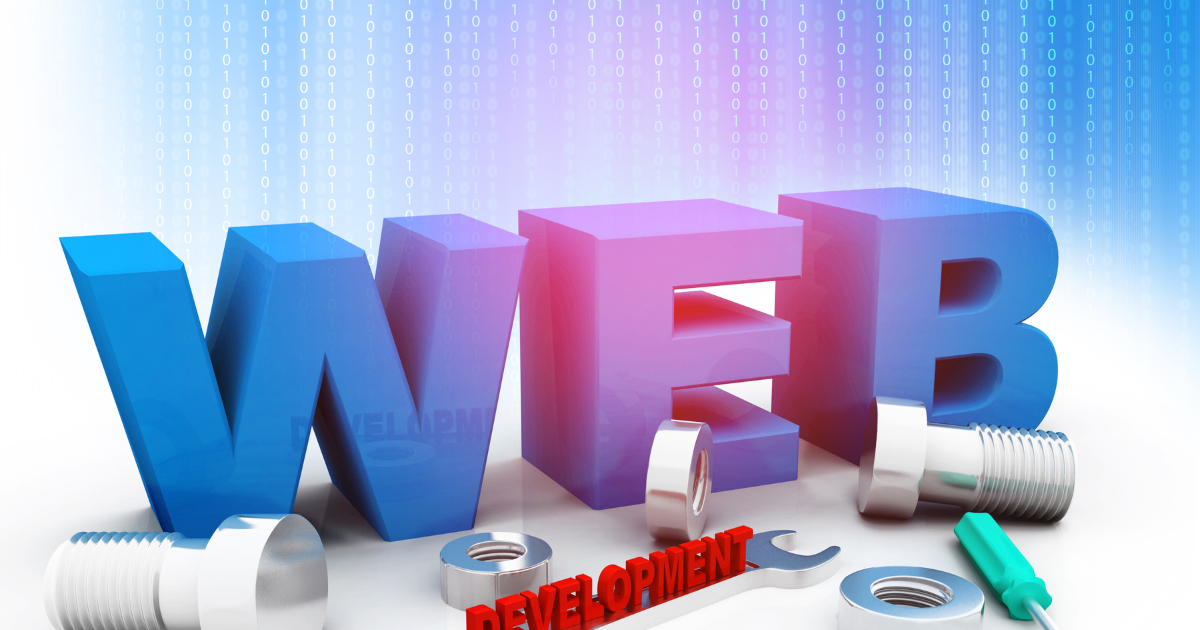12 Best Web Development Frameworks to Use
Building a website can seem overwhelming, but with the right web development frameworks, creating a website can be a breeze. There are dozens of web development frameworks available, each offering different benefits and features.
To help narrow down your choices, we’ve compiled some of the most popular web development frameworks for you to consider when building out your website.
What is Web Development Framework?
A web development framework is an application that helps developers quickly create and maintain websites and applications. It provides the structure needed to build dynamic websites and applications.
This also provides all the necessary tools for database management and templates for user interface design. It also included security features to keep your website safe from malicious attacks.
5 Things to Consider Before Choosing a Web Development Framework
There are many factors that a web development company should consider while choosing a web development framework, including that it provides the needed functionality and has documented code or an active community.
However, there are more particular needs that are often overlooked when deciding on the best framework for web development —
1) Hosting needs
Does the framework require a dedicated host for the application or does it work on shared hosting situations? There are some frameworks, most notably Ruby on Rails and Django, that require more non-standard, not-shared setups.
2) Smooth installation
Given that the primary benefit of using a framework is to make things easier, the last thing wanted is a complicated installation, which in turn can add to deployment time. Some frameworks only require a couple of minor adjustments to configurations while others require many more steps – so developer beware!
3) Core code library
As above, if the primary choice for using a framework is to aid in development, then that framework’s core library should have the features that are needed. Additionally, there should be the option to customize those features or swap out parts for others from another library to have the kind of granular control needed.
4) Unit testing
Unit tests are the base of any testing set-up, done so frequently during development and throughout maintenance to ensure performance. Look for frameworks that have core tests already and/or that allow for custom unit tests to be written.
5) License
While most frameworks offer licenses without restriction, some frameworks may not support commercial application development. Be sure to extend this due diligence to any plugins, libraries or extensions also used in the application.
Front-end Development Frameworks
Front-end development frameworks provide a pre-written structure for creating the front-end part of a web application. They organize the functionality, manage user interactivity and style components, and set up the data flow based on user input.
Therefore, front-end frameworks serve to create intuitive interfaces, as well as efficiently locate, manage, and update data received from the server or API. Core technologies that power front-end frameworks — HTML, CSS, JavaScript. Most popular front-end development frameworks: Angular, React, Vue, Ember, jQuery
Back-end Development Frameworks
Back-end development frameworks provide scaffolding for delivering the server-side architecture of a web app. They handle all manipulations between the server and the database, create URL mapping, and do what it takes to set up the right structure to implement the specificity of business logic.
As a fully-functioning web application deals with different services, a back-end developer ensures smooth communication between them and keeps an eye on user interaction as well.
Core technologies that power back-end frameworks: Python, JavaScript, PHP, Ruby. Most popular back-end development frameworks: Django, Express, Rails, Laravel, Spring
Here are the 12 Best Web Development Frameworks:
1) React.js
React.js is an open-source JavaScript library used for creating user interfaces. Developed and maintained by Facebook, React is fast becoming one of the most popular frameworks for developing websites and web applications.
This is due to its flexibility and scalability. It allows developers to create complex user interfaces quickly and easily, while also providing them with the ability to scale their projects as needed.
It’s also highly popular because it allows developers to create dynamic single-page applications (SPAs) that offer users a seamless experience when navigating between different pages on the site.
2) Vue.js
Vue.js is another open-source JavaScript framework that has gained popularity in recent years due to its easy learning curve and simple integration with existing projects. It’s known for being lightweight and flexible enough to handle small as well as large projects without sacrificing performance or scalability. Vue also offers two-way data binding which makes it easier for developers. It keeps track of changes made in their codebase without having to manually update all parts of the project each time a change is made.
3) AngularJS
AngularJS is an open-source JavaScript framework developed by Google in 2009 that allows developers to create dynamic single-page applications (SPAs). It’s built using Model View Controller (MVC) architecture which separates the application into three distinct layers – model (data layer), view (UI layer), and controller (logic layer).
This makes it easier for developers to build complex applications without having to write long lines of code or manage multiple files at once. AngularJS also offers two-way data binding which allows changes made in one part of the application. It is done to automatically propagate throughout the entire application without any extra effort from the developer.
4) Laravel
Laravel is an open-source PHP framework created by Taylor Otwell in 2011. It was designed to make web development easier and more enjoyable by reducing common tasks like routing, authentication, caching, and session management into simpler commands. It also offers an expressive syntax that allows developers to express their intentions clearly when writing code. And because it’s open source, anyone can contribute to the project!
5) Symfony
Symfony is another open-source PHP framework created in 2005 by Fabien Potencier. It’s known for being reliable and stable due to its extensive testing process before any new features are released. One of its main draws compared to other frameworks is its focus on object-oriented programming (OOP).
This allows developers to create reusable components that can be used across multiple projects. Additionally, it provides great documentation so developers can quickly get up and running with their projects.
6) Bootstrap
Bootstrap is one of the most popular frameworks for creating mobile, responsive web content, currently the most popular CSS framework on the market, used by over 19.6% of all websites. Bootstrap is popular for its templates, which speed development, although some critics say this creates a more “uniform” look to the final websites. Popular examples of Bootstrap include Lee, Fox News, Reuters, and NetGuru.
7) Ruby on Rails (RoR)
Ruby on Rails is considered one of the most powerful frameworks due to its straightforward syntax and active community. It is easy for developers to find help and resources when needed.
RoR provides several features such as a Model View Controller (MVC) architecture, database access libraries, templating systems, libraries for testing and debugging, and much more that make developing applications faster and easier.
8) Django
Django is an open-source Python-based web framework used by many large companies such as Instagram, Pinterest, Mozilla. Django has an intuitive design that allows developers to create apps quickly with minimal effort.
Its built-in features like ORM (Object Relational Mapping) allow it to interact with databases easily while also protecting against malicious attacks like SQL injection attacks. Additionally, Django has a thriving support community that can assist when needed.
9) NodeJS
NodeJS is an open-source server-side JavaScript runtime environment built on Chrome’s V8 JavaScript engine. It enables developers to create better performance network applications quickly and easily using JavaScript code instead of traditional server-side languages like Java or PHP. Node offers several advantages over other server-side frameworks including its asynchronous event-driven architecture.
It enables faster response times for requests made through its API endpoints. Also, it has the ability to scale up or down depending on traffic levels and resource availability. A node can be used for both front-end and back-end development making it a great choice for full-stack web development projects.
10) NET Core
.NET Core is an open-source, cross-platform version of Microsoft’s popular. .NET framework was released in 2016 and has since become one of the leading frameworks for web development.
Unlike other web frameworks, .NET Core allows developers to develop their applications for Windows, macOS, and Linux platforms simultaneously. This means that developers can write their code once and deploy it across multiple operating systems without having to rewrite or maintain separate versions of their cover.
11) Flask
Flask is a lightweight framework that makes it easy for developers to create applications. It has great features that make it flexible and powerful, such as an integrated debugging system, URL routing, support for multiple databases, and more. It requires less code than other frameworks which makes it easier for developers to write code quickly and efficiently.
Flask also provides excellent documentation that makes it easy for both experienced and new developers to learn how to use it effectively. It also has a vibrant community of users who provide support and share their knowledge with others through online forums or social media groups. This makes it a great choice if you need help with your project or want to find solutions to any issues you may have encountered while coding with Flask.
12) CodeIgniter
CodeIgniter offers a light PHP framework that has one of the smallest footprints, saving time with less coding needed. Developers appreciate the speed of CodeIgniter, with many built-in features that don’t rely on many external components. CodeIgniter also uses MVC architecture. Popular websites using CodeIgniter include Buffer, Casio Computers, and Nissan.
Conclusion
With so many options available, choosing between different web development frameworks can feel like a daunting task! We hope this quick overview has given you some insight into what type of framework might work best for your project needs. The most used web development framework worldwide was Node.js which accounts for 47.12%. Of course, if you’re still unsure about which platform would be best suited for you, consulting with an experienced web developer may be beneficial too!












